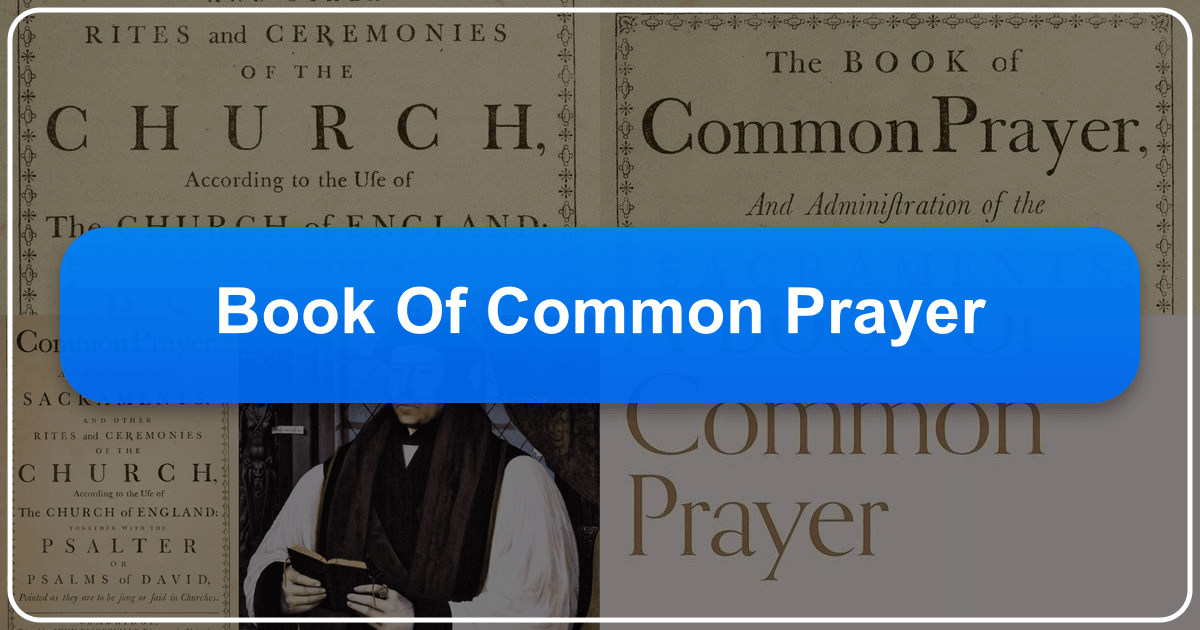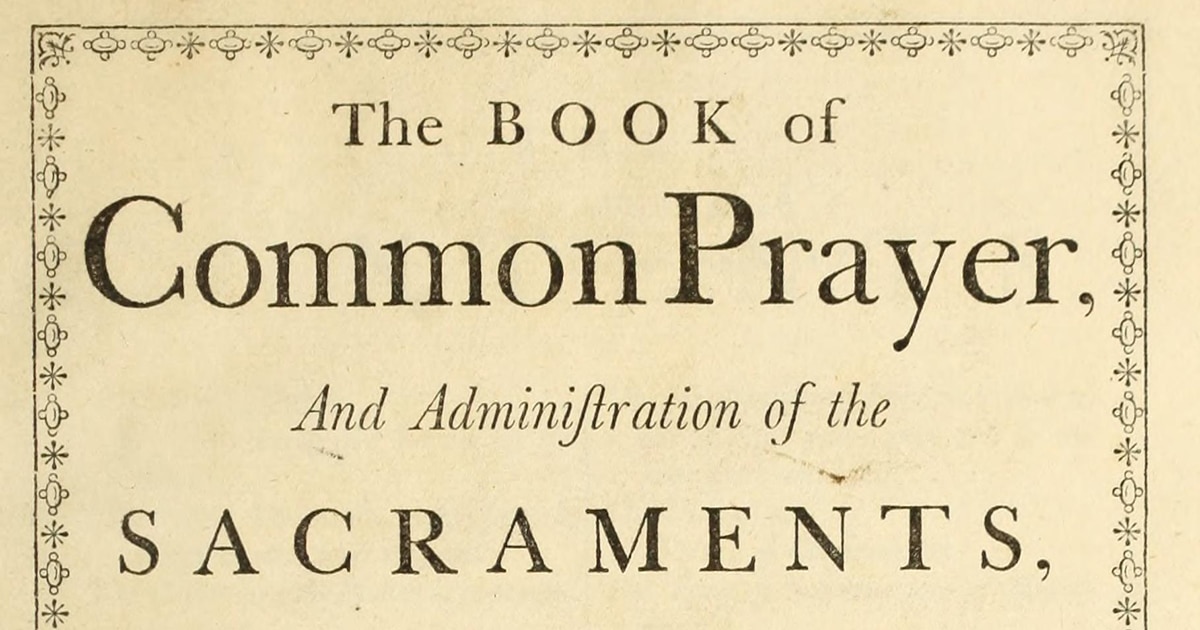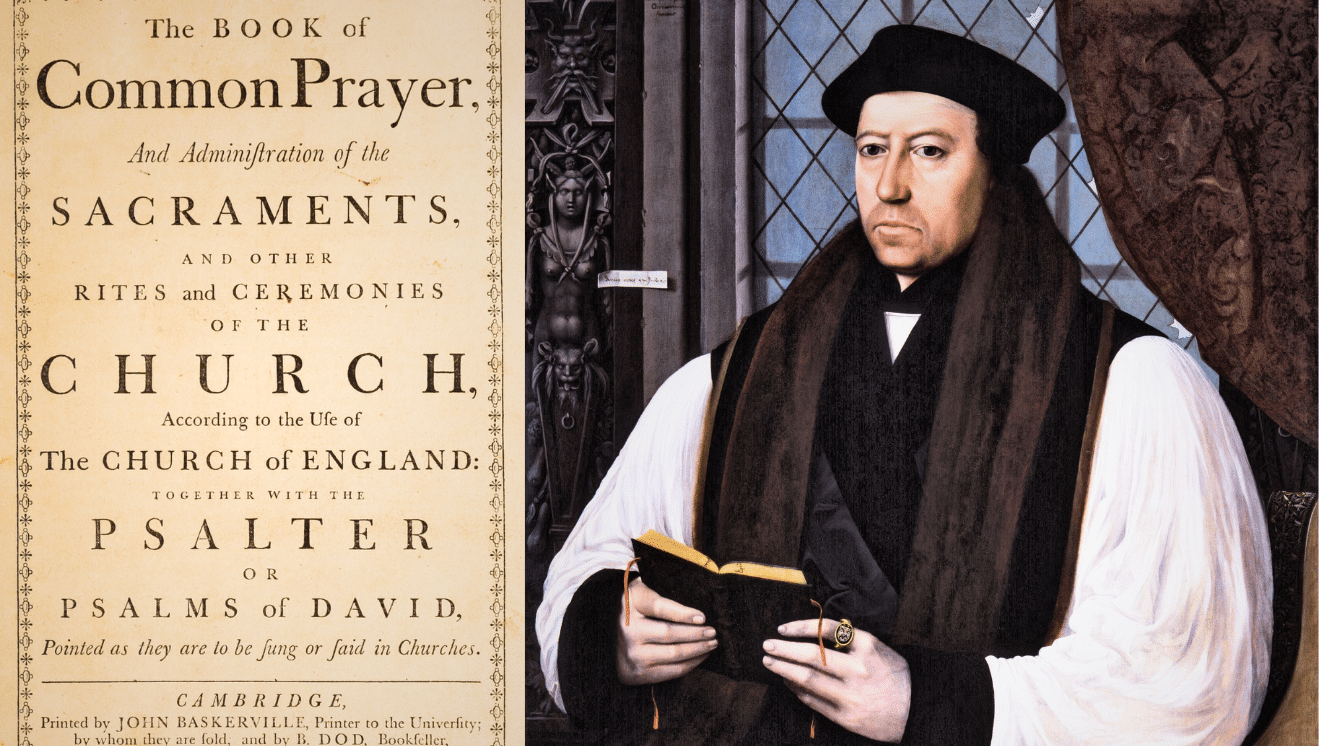The Enduring Legacy of the Book of Common Prayer: A Comprehensive Exploration

The Book of Common Prayer (BCP), a cornerstone of Anglican worship and a significant influence on English literature and culture, continues to resonate centuries after its initial publication. This exploration delves into the BCP’s multifaceted impact, examining its historical context, theological significance, literary artistry, and lasting cultural influence across various aspects of life, drawing parallels with contemporary literature and the digital age.
I. The Book of Common Prayer: A Literary and Theological Classic

The BCP is not merely a liturgical text; it’s a literary masterpiece. First published in 1549 under the reign of Edward VI, and subsequently revised, culminating in the 1662 edition still used by the Church of England, the BCP represents a confluence of theological currents and stylistic choices. Its creation was a complex process, reflecting the religious and political turmoil of the English Reformation. Archbishop Thomas Cranmer played a pivotal role in its development, aiming to create a service book accessible to all, while retaining elements of traditional Catholic worship that were deemed compatible with Protestant theology. This delicate balancing act is a key to understanding the BCP’s enduring appeal and its capacity to bridge divides within the Anglican Communion itself.
The 1662 edition, though revised, retained much of the structure and language of earlier versions, representing a balance between continuity and change. Its continued usage highlights its enduring quality as a text that speaks to the human condition across centuries. Subsequent revisions, such as the 1928 Prayer Book and the 1984 Alternative Service Book (with Common Worship as a modern successor), demonstrate the ongoing dialogue within Anglicanism about liturgical language and practice. These revised versions, while reflecting changing sensibilities, never entirely abandon the foundational text of the 1662 BCP.

A. Genre and Style: A Blend of Tradition and Innovation
The BCP’s genre is unique. It’s a collection of liturgical texts: prayers, collects, psalms, canticles, and services for various occasions. Its style blends the formal eloquence of medieval Latin liturgy with the emerging vernacular style of the English Renaissance. The language is both elevated and accessible, capable of conveying profound theological concepts with clarity and grace. While archaic in some respects, its poetry and prose continue to be studied and admired for their evocative power and enduring beauty. The use of biblical language and imagery imbues the text with a rich theological depth, firmly grounding it in scripture. The beauty of its language and the seriousness of its theology are essential to its longevity.
B. Theological Content and Educational Value: A Foundation for Faith

The BCP’s theological content is rich and complex. It embodies a synthesis of Catholic tradition and Protestant reform. The book’s core message centers on the Christian faith, emphasizing the centrality of Jesus Christ and the importance of prayer, sacraments, and scripture. The BCP’s educational value extends beyond theological instruction. It is a tool for spiritual formation, offering guidance for individual and communal prayer and worship. Its structure and language provide a framework for theological reflection. Its use in daily prayer and communal worship instills essential life lessons about faith, community, and the importance of regular spiritual practice. For many, the rhythms and routines of the BCP have become a central organizing principle in their spiritual lives.
C. Cultural Impact and Literary Influence: Shaping English Language and Thought
The BCP has exerted a profound cultural impact, both in its influence on the development of the English language and its contribution to shaping English literature. The widespread use of the BCP helped standardize English, its familiar phrases and prayers becoming ingrained in the everyday vocabulary and expression of English speakers. The beauty of the liturgy’s language is undeniable and continues to influence modern writers and poets.
The BCP’s influence on literature is evident in the works of numerous authors, who have drawn inspiration from its language, imagery, and theological themes. Furthermore, the BCP’s impact extends far beyond religious contexts. Its impact on English language and literature is undeniable. Its rich and varied imagery has made it a source of inspiration for countless works.
II. Authors and Contributors: Shaping the Prayer Book Tradition
The BCP wasn’t the work of a single author but the product of a collaborative effort involving numerous theologians, scholars, and church leaders. Thomas Cranmer, Archbishop of Canterbury, is widely considered the primary architect of the first BCP, but he drew upon the work of many others. The ongoing process of revision, spanning centuries, involved countless contributions, representing a tapestry of theological perspectives and stylistic preferences within the Anglican tradition. This collaborative nature of the BCP highlights its inherent adaptability and its ability to incorporate evolving theological understandings while maintaining its core identity.
A. Cranmer’s Legacy: Architect of the BCP
Cranmer’s contributions to the BCP are immeasurable. He played a critical role in shaping its theological content and liturgical structure. His aim was to produce a prayer book accessible to all while retaining elements of traditional Catholic worship. His life and work provide essential context for understanding the BCP’s development and significance. He navigated the complexities of the Reformation, attempting to balance the desires for reform with the preservation of traditional elements.
B. Subsequent Revisions and Contributors: Evolving the BCP
Subsequent revisions of the BCP involved numerous individuals, reflecting the ongoing dialogue within the Church of England and its ongoing response to cultural and theological shifts. The 1662 BCP, for example, built upon earlier versions and represented a further refinement of the liturgical language and structure. Each revision reflects the theological and cultural context of its time. This highlights the dynamic character of the BCP and its adaptability in responding to changing needs.
III. Reading Habits and Engagement: The BCP in the Digital Age
The BCP’s enduring appeal is evident in the continued interest in its liturgical texts and its ongoing use in Anglican churches worldwide. Today, alongside traditional printed versions, the BCP is available in various digital formats, facilitating wider access and engagement. This accessibility extends the book’s reach, engaging both seasoned worshippers and those new to Anglican traditions. The accessibility of digital versions enables a wider audience to engage with its rich language and profound theology.
A. Digital Access and Modernization: Expanding Reach
The availability of digital versions of the BCP, through websites, apps, and e-readers, broadens its reach to a global audience. These digital formats allow for easy searching, annotation, and cross-referencing, enhancing accessibility for users. Digital versions enable engagement for those unable to physically access printed editions.
B. Contemporary Relevance: Addressing Modern Concerns
While rooted in its historical context, the BCP’s themes of prayer, worship, and spiritual growth remain timeless. Its enduring relevance is demonstrated by its continued use and the ongoing attempts to make its language and message accessible to contemporary readers.
IV. Libraries and Archives: Preserving the Legacy of the BCP
Numerous libraries and archives worldwide hold copies of the BCP, in its various editions and translations, representing a valuable historical and cultural heritage. These institutions serve as custodians of the BCP, preserving its historical significance and making it accessible to researchers and the public. These collections are crucial for understanding the evolution of the text and the shifts in theological perspectives over time.
A. Physical and Digital Archives: Safeguarding the BCP
Libraries and archives across the globe hold collections of various editions and translations of the BCP. These institutions are vital in preserving this important historical and cultural artifact. Some archives offer digital versions of BCP editions for enhanced accessibility.
B. Research and Scholarship: Unlocking the BCP’s Secrets
The BCP remains a subject of ongoing academic research. Scholars continue to explore its theological underpinnings, literary style, and cultural impact. Libraries and archives, with their comprehensive holdings, provide invaluable resources for such research. This ongoing scholarly engagement ensures that the BCP’s message and legacy are continually studied and understood.
V. Communities and Adaptations: The BCP’s Ongoing Influence
The BCP’s influence extends beyond specific religious contexts. The book’s language and themes have permeated various aspects of English culture, influencing literature, art, and music. The BCP’s legacy continues to be celebrated and explored by various communities. Its enduring presence in Anglican churches and its ongoing use in diverse contexts confirm its lasting significance.
A. Anglican Communities and the BCP’s Central Role
The BCP remains central to the liturgical life of Anglican churches worldwide. It provides the framework for their worship services and continues to shape their theological identity. Anglican communities actively engage with the BCP, enriching their spiritual lives through its use in daily prayer and communal worship.
B. Adaptations and Interpretations: The BCP’s Flexibility
The BCP has been adapted and interpreted in diverse ways across different Anglican traditions. This reflects the adaptability of the text and its ability to incorporate varying theological perspectives while upholding its core principles. Its adaptability contributes to its longevity and broad appeal.
In conclusion, the Book of Common Prayer stands as a testament to the power of language, the enduring nature of faith, and the evolving dialogue within religious traditions. Its rich history, theological depth, literary artistry, and ongoing influence demonstrate its lasting significance across centuries. The BCP’s continued relevance, particularly its adaptation to the digital age, reinforces its position as a pivotal text in English literature and religious history.